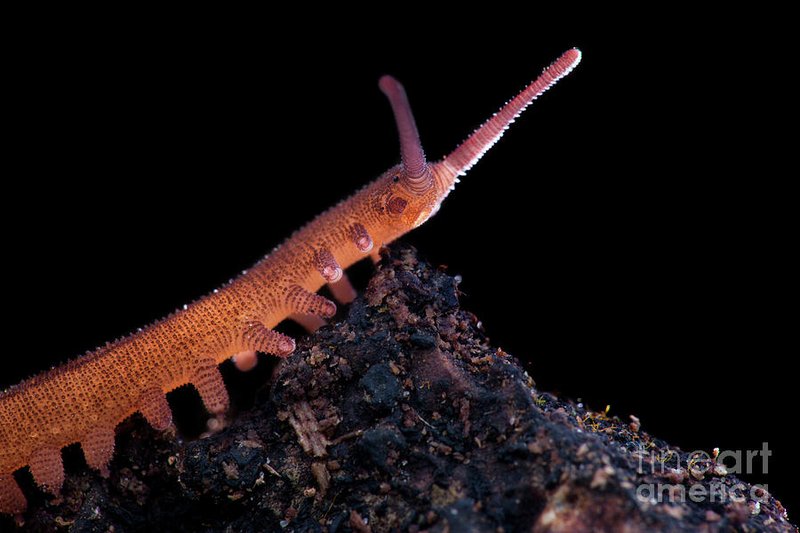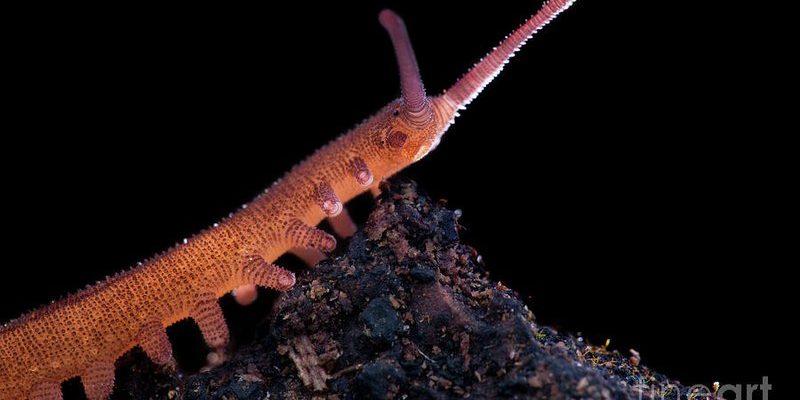
So, why should we care about velvet worms and their microclimate preferences? Well, they play a vital role in their ecosystems, and learning about them can offer valuable insights into biodiversity. It’s like finding out how a certain plant or animal contributes to your own backyard. Let’s dive deeper into the quirky world of velvet worms and see what makes their habitat so special.
What Are Velvet Worms?
Velvet worms, belonging to the phylum Onychophora, are ancient creatures that roamed the Earth long before dinosaurs. Imagine a cross between a caterpillar and a slug—strange, yet endearing. They typically range from 1 to 15 centimeters in length and have a soft, velvety body covered in tiny tubercles that give them that unique texture.
These fascinating critters are often found in humid, forested areas, primarily in tropical and subtropical environments. They actually breathe through their skin, which means they need a moist atmosphere to survive. This is one reason why understanding their microclimate preferences is crucial. If their environment dries out too much, they can face real challenges—like we would without water on a hot summer day.
Microclimates: What Are They and Why Do They Matter?
Microclimates are small, localized areas where the climate differs from the surrounding environment. Think of it as a cozy niche where velvet worms can find their perfect habitat. Factors such as temperature, humidity, and light can vary significantly within just a few meters.
For instance, imagine standing under a tree on a sunny day. While the area under the tree might be cooler and shadier, just a few feet away, the sun beats down fiercely. That’s a microclimate in action! For velvet worms, these small changes can mean the difference between thriving or merely surviving.
Understanding microclimate preferences isn’t just academic; it has real implications for conservation efforts. If we can pinpoint where these little guys flourish, we can better protect their habitats and, by extension, the ecosystems they help maintain.
Habitat Requirements of Velvet Worms
Velvet worms prefer specific conditions to thrive. They love moist environments, typically found in leaf litter or under rocks in forests. This setup offers them not only moisture but also cover from predators. Think of it like finding a cozy nook in your home—a place where you feel safe and comfortable.
Moreover, velvet worms tend to be nocturnal, coming out under the cover of darkness to hunt for insects. Why? Well, nighttime provides a cooler and more humid environment, minimizing the risk of desiccation (that’s a fancy word for drying out).
When studying velvet worms, researchers look closely at factors like:
- Humidity levels
- Temperature gradients
- Soil composition
- Availability of shelter
Each of these elements plays a crucial role in where they choose to reside.
How Climate Change Affects Velvet Worms
You might be wondering how changes in climate impact our soft-bodied friends. With global temperatures rising and weather patterns shifting, the delicate microclimates that velvet worms rely on are becoming increasingly unstable.
For instance, a warming climate might lead to reduced humidity levels in forested areas. Since these creatures need moisture to survive, a drop in humidity can create a hostile environment. This could lead to a decline in velvet worm populations, affecting the creatures that depend on them as a food source and the overall health of the ecosystem.
Moreover, habitat destruction caused by human activity can further complicate their situation. As forests are cut down or altered, the specific microclimates that velvet worms need could vanish. Here’s the thing: if we don’t pay attention to these changes, we risk losing not just velvet worms, but also the rich biodiversity that exists alongside them.
Conservation Efforts for Velvet Worms
With their unique habitat requirements, conservation measures are essential for the survival of velvet worms. Protecting their forest homes is a top priority. Many organizations focus on preserving native forests, which helps maintain the microclimates these worms thrive in.
One effective way to do this is through creating protected areas—think of them as safe havens. These zones allow velvet worms and other forest-dwelling species to flourish without the looming threat of habitat destruction.
Additionally, educating the public about the importance of these creatures can go a long way. When people understand the role that velvet worms play in their ecosystems, they might be more inclined to support conservation efforts. It’s like rallying support for a local sports team—the more people care, the better chance the team has to thrive.
Interesting Facts about Velvet Worms
As you explore the world of velvet worms, you’ll discover some fun little tidbits that make them even more fascinating! Here are a few interesting facts:
- Velvet worms can live up to 7 years in the wild! That’s quite a long life for such small creatures.
- They have a unique way of hunting—they use a sticky slime to trap their prey, which usually consists of small insects.
- Velvet worms are part of a rare group of animals that have both characteristics of insects and annelids, making them a living link between the two.
- They have a fascinating mating ritual, where males can be seen performing elaborate dances to attract females.
These quirky attributes add to the charm of velvet worms and show just how diverse and interesting life can be, even in the smallest creatures.
Final Thoughts on Velvet Worms and Microclimate Preferences
Understanding velvet worms and their microclimate preferences is more than just an academic exercise; it’s crucial for appreciating and preserving biodiversity. These unique creatures remind us of the delicate balance in nature and how every species plays a part.
By learning about their habitats, responding to the challenges posed by climate change, and supporting conservation efforts, we can ensure that velvet worms continue to thrive in their lush, moist environments. Next time you come across a cozy nook in nature, think of velvet worms snugly nestled in their microclimates, living their best lives. After all, the more we know about the world around us, the better we can protect it.

